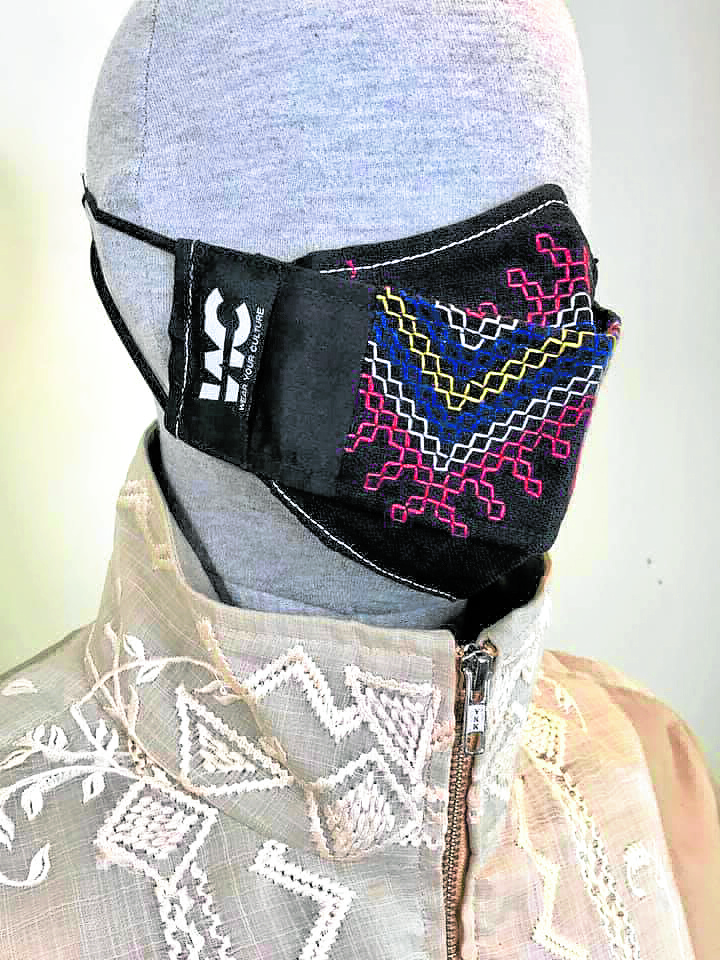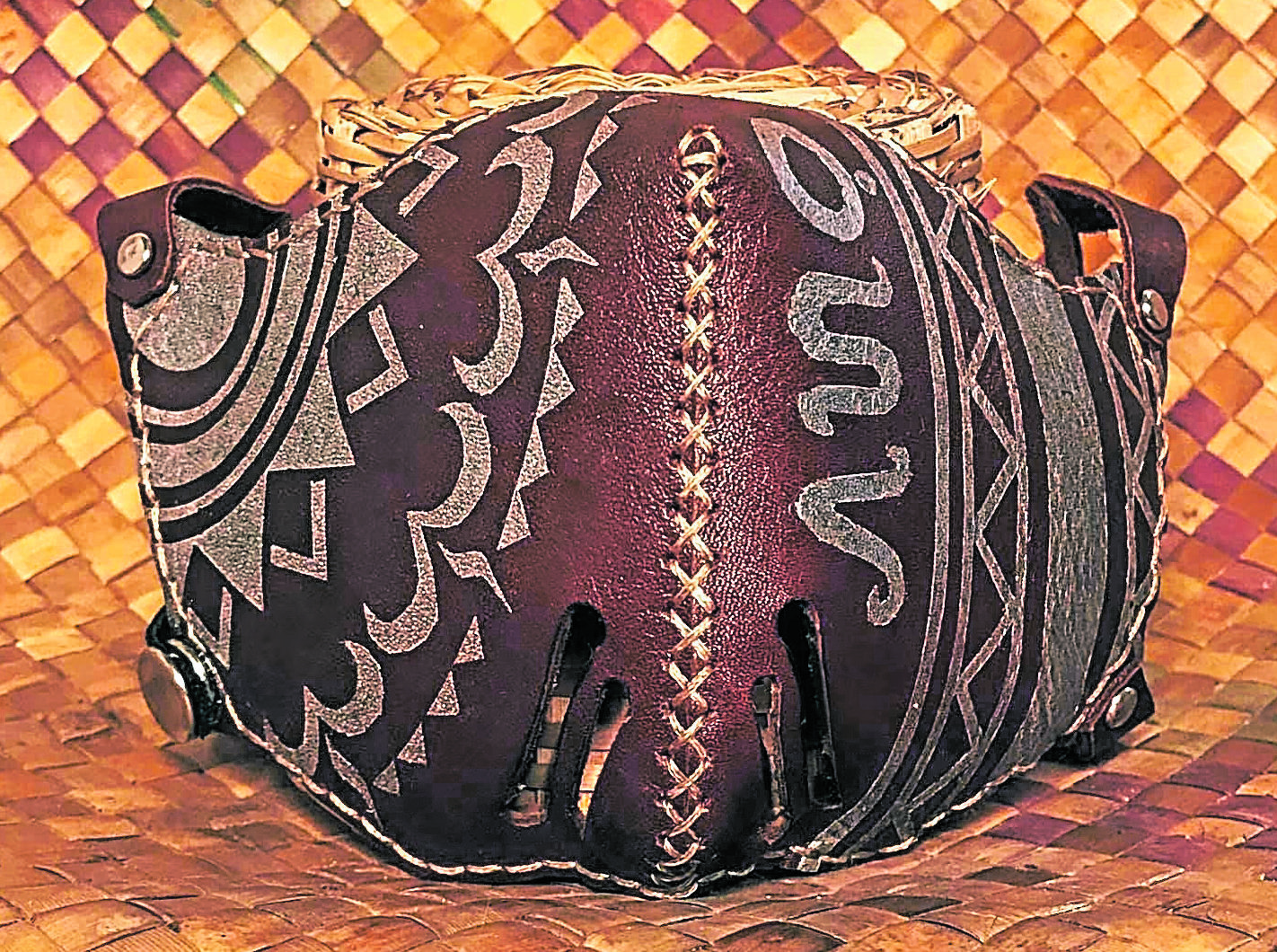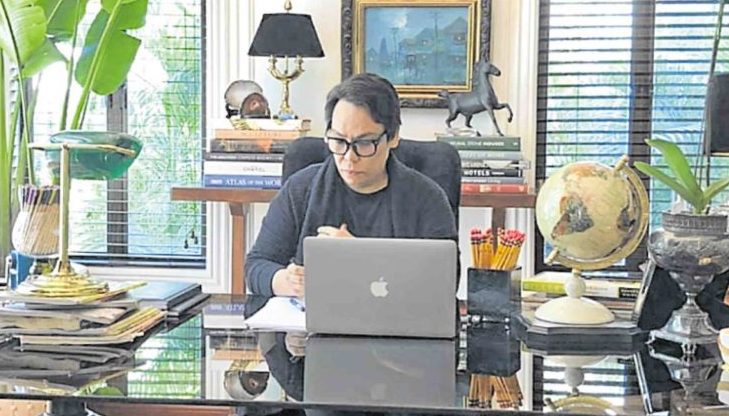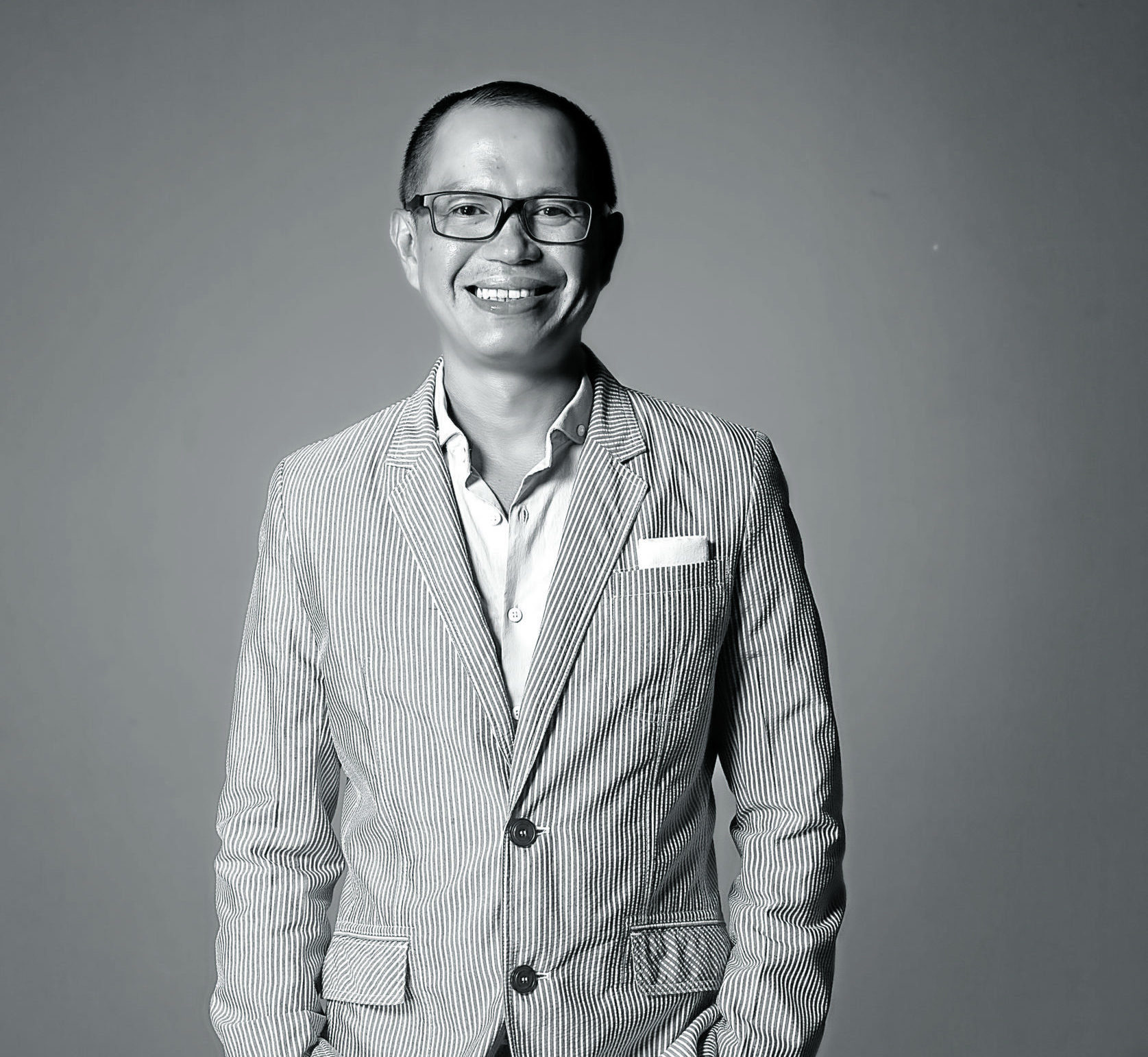
With his savings, Cebuano couturier Cary Santiago thought he could sit out the pandemic. Over time, he had to adapt.
In the past, he usually produced two bridal gowns, formals for the mothers of the bride and groom, and a slew of evening wear every month. Last March, he shut down his atelier and urged his clients to move their weddings and special events to 2021. Fittings would resume in January.
Santiago’s staff of 25—tailors, master cutters, beaders, hand and machine sewers, delivery boy and purchaser—received their 13th month pay in April and a government aid of P5,000 each. Sewing machines were lent to tailors who made masks and personal protective equipment for Santiago’s clients. To provide a steady but modest income, he distributed lace embellishments among his artisans in preparation for next year’s gowns.
Meanwhile, he knew his funds would eventually dry up. Santiago, who is a self-taught painter, called up clients and enticed them to get their portraits done or to buy his landscapes and still-life artworks. “I focused on my Cebu clients because it’s hard to ship items to Manila,” he said.
He also offered to design furniture and accent chairs. As restrictions eased, clients ordered small volumes of uniforms and formals for intimate weddings.
Prepandemic, Santiago had set aside his other artistic skills. “I didn’t want to spread myself too thin,” he said. With the void of socials that impacted the demand for formal wear, he had to take a different route.
“I learned a lot from this pandemic. It’s important to save for a rainy day but it won’t last. I survived because of the paintings and alternative design projects. It’s important to remind your clients and friends that you’re still around and you’re at their service.”
The designer is one of the panelists who will talk about rising to the pandemic’s challenges in the Design Summit webinar series, the highlight of Cebu Design Week (CDW).

Reboot
Organized by the Cebu Furniture Industries Foundation Inc., CDW was conceived as Cebu’s major exhibition that united creatives and artisans in the Visayas.
Cebu prides itself in being part of the United Nations Educational, Scientific and Cultural Organization (Unesco) Creative Cities network. Prepandemic, it was estimated that Cebu’s creative industry, which covers design, creative services, heritage, arts and media, and noncreative industries of tourism and real estate, contributed $500 million or 7 percent to the Philippines’ gross domestic product, according to Butch Carungay, jewelry exporter and consultant to the United Nations Department of Economic and Social Affairs (Undesa).
The cancelation of exhibits and trade fairs forced the creative industry to go virtual. On Oct. 26-31, CDW will present resource persons from the Philippines and abroad, and the Blue Mango Awards will be held Oct. 28. The events are open to everybody who registers for free and has access to Zoom. Links will be uploaded on CDW’s Facebook and Instagram pages.
“In this pandemic, we have found a way to come together and help each other. We have to change our mindset,” said CDW president Cristina Gaston at the virtual press launch Oct. 6.
A Cebuana with a business based in Negros Occidental, Gaston told Lifestyle how her furniture and furnishing company had to level up during quarantine. Hacienda Crafts was established to provide extra income to farmers in a sugar plantation in Manapla.
During the lockdown, her workers made their living by reverting to farming. Hacienda Crafts went full-on digital by shifting from bank transfers to e-payments and meetings through Zoom. Although the company joined virtual trade fairs, it didn’t generate much sales. The company used the downtime to improve its marketing.
“Looking into the future, we had to be more professional,” Gaston said. In the past, the 25-year-old company promoted itself for its products made using natural materials. “We have to communicate a brand story. The value proposition is that each item is an expression of the artisan.”
As the global economy reopened, Hacienda Crafts started receiving orders. Since the weavers and artisans had always worked from home, there were fewer concerns about health risks. However, strict quarantines and travel restrictions interrupted the sourcing of materials from other parts of Visayas and Mindanao.
“We learned that despite the delays, it’s still possible to create,” said Gaston. “First, we have to accept that there are issues to face.”

Staying competitive
The three-day Design Summit will tackle how businesses can change and take advantage of the crisis in order to stay competitive. On Oct. 26, the theme “Asan na si Lapu-Lapu” will be discussed by panelists who will share how they coped with the pandemic. “Opportunities from Adversities” on Oct. 27 will present success stories during the crisis.
“Rethinking Tomorrow” will present how the government and private sector can help the creative industry as an economic driver. Special guest is former actor and Rep. Christopher de Venecia, who formed the Arts and Culture and Creative Industries Bloc in Congress.
Carungay, who heads the Blue Mango Awards, has made the categories more relevant to the pandemic. He said it aims to engage the public who are weary of “webinaria” (the onslaught of webinars) and have taken up activities during quarantine.
The major award is the Best Business Plan for how businesses will be pivoting in these tough times. Then there are awards for Creative PPE, Food Presentation for home cooks, Indoor Herb Garden for the plantitos and plantitas, Best Work-from-Home Station, Best Small-Scale Street Art, and COVID Response from organizations who helped the community.
The Mystical Voter Award goes to the person who’s tapped the most likes and shared the most content.
Asked how the design industries coped, Carungay said the CDW launched the Stay Home Stay Creative campaign, narrating stories on how people remained productive during the lockdown.
On Facebook, it set up the Cebu Design Week Home and Interiors Market and the Cebu Design Week Maker’s Market for non-furniture and handmade products. Sales from the Home and Interiors page were slow, as the local market was not willing to spend on big-ticket items. On the other hand, the Maker’s Market flourished with its sales of masks, PPE, notebooks and planners.
The fashion accessories market is likewise down. Carungay was known for his brand Avatar, which had outlets in Cebu until last year. His company Zai has been producing for private labels. The once 800-person workforce is down to 30. His company operates thrice a week at a 20-percent capacity. Nevertheless, he feels he has been unburdened. “I’m happier now,” he said.

Design is essential
Mari Booth, CDW event chairperson, said 2020 was a banner year for her family’s furniture business Mehitabel. With shelter-in-place orders from the United States, people invested in redecorating. Online furniture companies comprise the bulk of its business. “When furniture stores were shut down, customers could not order from them. Those with an online presence received a lot of orders.”
Other businesses were not as lucky, said furniture manufacturer Laurie Boquiren, CDW’s chairperson for marketing, ways and means. Some furniture businesses had to downsize. Fashion designers planned to hold exhibits twice a year, as these could provide income that could tide them over for several months.
“On furniture, CFIF is planning programs to help our members increase their visibility and connectivity with our clients here and abroad. The reality is that the projects are on hold. With the gradual reopening of the economy, there is hope,” said Boquiren.
Since March, Carungay has been working on Undesa’s research on the impact of the new coronavirus disease on Cebu’s creative sectors. One of the findings is that small and medium enterprises have gone digital, from 20 to 60 percent of their business, and have shifted to online payments.
“There is a misconception that design is nonessential in these extremely challenging times. It’s crucial to rise up from the ashes as we reboot under a new paradigm,” he said. “Most things need new designs to reflect the ‘next normal’—from the spaces we occupy, the products we consume, to the experiences that we engage in. Design is an invaluable tool to reach our goals. We, as designers, should assert our unique skill sets as problem solvers.” —CONTRIBUTED











































